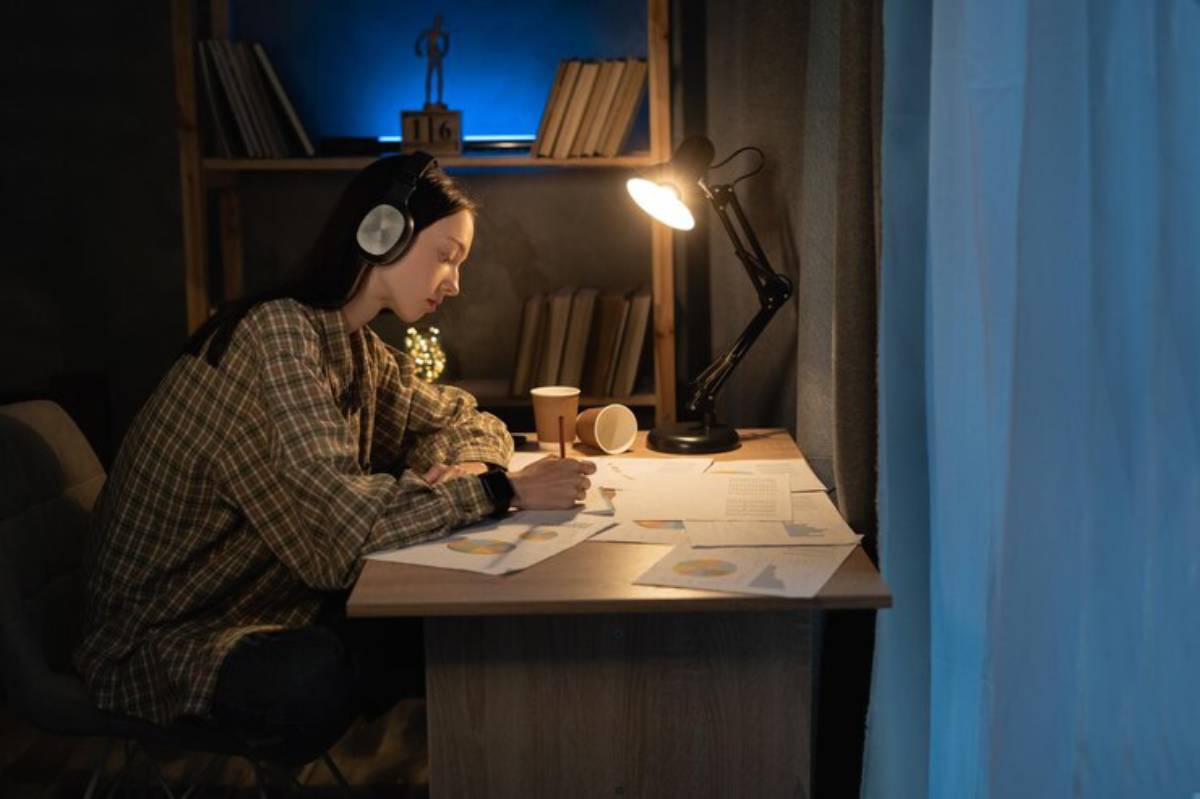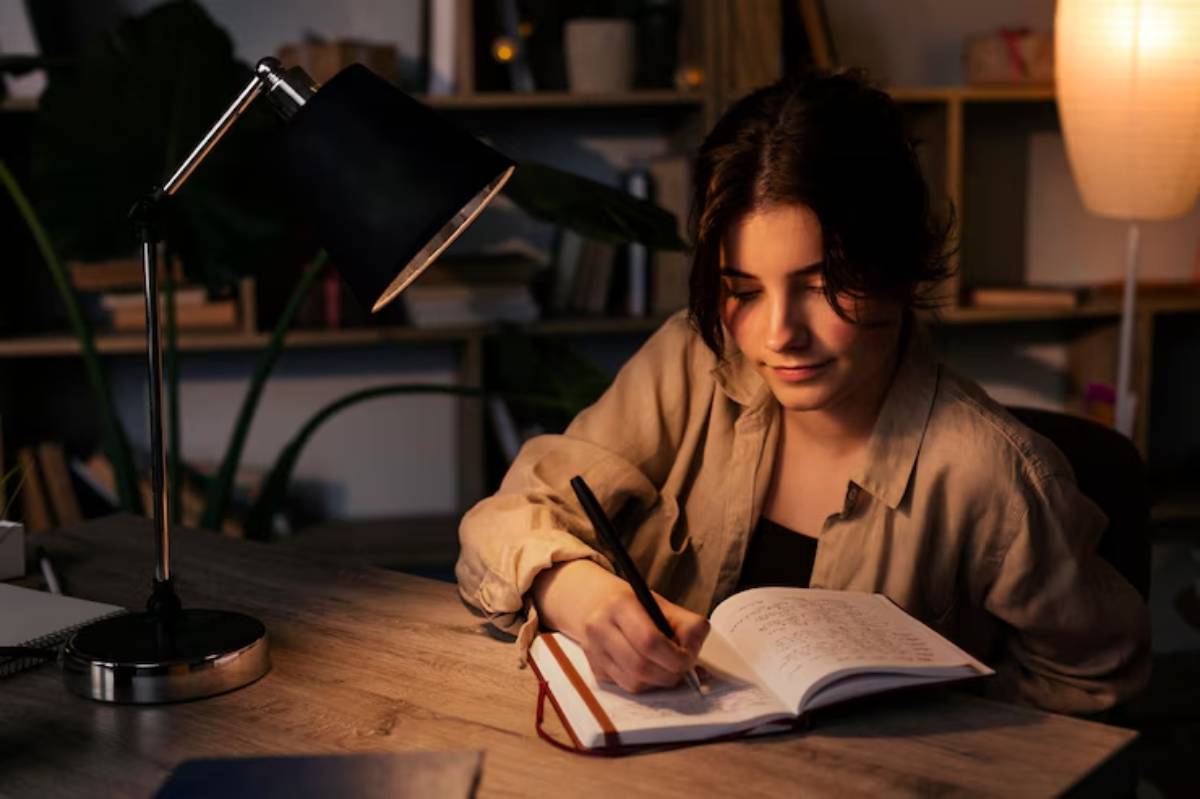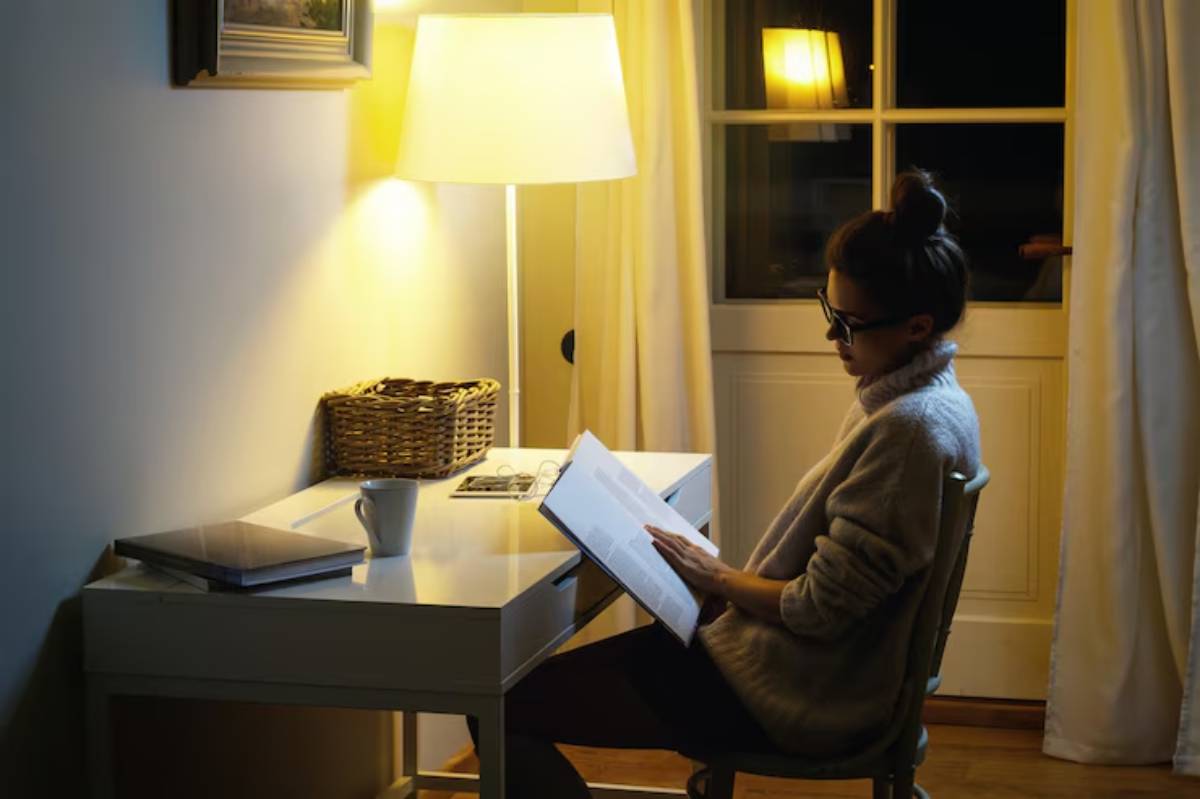
Best Lighting and Desk Setups for Late Night Studying
Many students study late into the night. They do this to prepare for exams, finish assignments, or because it’s quieter then. But late-night productivity hinges on more than just willpower. The right lighting and desk setup can make or break your concentration, energy levels, and even your long-term health.
A good study environment is important. It helps prevent eye strain and improves your posture. This is especially true during times when your body wants to rest. In this post, we’ll walk you through the best study lighting and desk setups, backed by research and practical advice.
Why It Matters
The Science Behind Lighting and Focus
Lighting directly affects how alert and focused you feel. Poor lighting can cause fatigue, reduce motivation, and even impact your circadian rhythm. For night owls, this is particularly critical. Poor lighting, like a dim room or bright overhead lights, can hurt your focus. It makes it hard to remember things and can even affect your sleep later.
Similarly, your desk setup plays a crucial role in supporting effective learning. A messy or uncomfortable workspace leads to more distractions. It can also cause physical discomfort over time.
When done right, your environment becomes a silent partner in your academic success.
Key Benefits
1. Reduces Eye Strain and Fatigue
Proper lighting, especially at night, reduces the strain on your eyes. When your screen is the brightest object in the room, your eyes constantly adjust, which can lead to dryness, headaches, and decreased focus.
Good task lighting is key. A warm LED desk lamp next to your main hand can help reduce eye strain. It keeps your eyes comfortable for a longer time.
2. Promotes Better Posture
Ergonomic desk setups prevent slouching, neck strain, and wrist discomfort. Adjustable chairs, monitor risers, and footrests support your posture, even during long study sessions.
3. Enhances Cognitive Performance
A well-lit, organised space primes your brain for focus and information retention. Good lighting and fewer distractions help boost working memory and processing speed. These two factors are essential for effective studying.
4. Supports a Healthy Sleep Schedule
Cool-toned lights, like daylight LEDs, can keep your brain alert. This can lead to trouble sleeping later. Opting for warm, dimmable lighting in the evening helps your body wind down after studying while still keeping you productive.
Additional Expert Tips & Common Mistakes to Avoid

Lighting Tips for Late-Night Studying
Choose Adjustable Task Lighting: A flexible desk lamp lets you aim light where you need it—on textbooks, notes, or your keyboard. Look for lamps with brightness settings and a warm colour temperature (2700K–3000K).
Avoid Overhead Fluorescents at Night: They’re often too bright and cold for evening hours. Rely on focused desk lighting paired with soft ambient light to create a calm, productive atmosphere.
Use Bias Lighting for Screens: Put a soft LED light behind your monitor. This helps reduce eye strain. It balances your screen’s brightness with the room’s light.
Desk Setup Best Practices
Maintain Desk Minimalism: Keep only essentials—laptop, notebook, water bottle, and key study tools. Decluttering reduces distractions and creates a clean visual field for concentration.
Ergonomics Over Aesthetics: Your desk height should allow your elbows to rest at a 90-degree angle. Your monitor should be at eye level to avoid neck strain. Consider using a monitor stand or stack of books if needed.
Incorporate Supportive Seating: An ergonomic chair with lumbar support promotes better posture. If you don’t have one, use a firm cushion for your lower back and a footrest to support your legs.
Common Pitfalls to Avoid
- Studying in Bed: While tempting, this habit can blur the boundary between rest and work, making it harder to sleep or focus.
- Avoid Blue Light Overexposure: Use screen filters or blue light-blocking glasses at night.
- Ignoring the Importance of Ambient Light: One small lamp in a dark room isn’t enough. Add a soft background light to balance the visual environment.
Advanced Insights and Expert Recommendations
How Light Affects Your Circadian Rhythm
Light isn’t just about visibility—it’s a cue for your body clock. Exposure to bright, cool light late at night suppresses melatonin, your sleep hormone. That’s why warmer lighting (like amber or orange tones) is recommended for evening productivity.
A great solution is using smart LED bulbs that let you adjust brightness and color temperature based on the time of day. Apps and timers can automate this transition to support both productivity and rest.
Monitor Placement and Neck Alignment
Neck strain from looking down at a screen all night adds up. Raise your monitor so the top of the screen is at or slightly below eye level. If you’re using a laptop, a separate keyboard and mouse paired with a riser will keep you comfortable over longer study sessions.
Incorporate Movement into Long Sessions

No desk setup can make up for staying still too long. Use the Pomodoro technique with your setup: study for 25–30 minutes, then stand, stretch, or walk for five. This boosts circulation and prevents mental fatigue.
Add Personal Touches—Mindfully
A plant, a calming candle, or one motivational quote can boost your mood without adding clutter. The goal is to create an environment that feels both functional and inviting.
Build Your Ideal Late-Night Study Zone

There’s no need to forfeit comfort, focus or sleep quality when studying late at night. With good lighting and a proper desk setup, anything can be a productive space. This allows you to reach your academic and creates a wholesome environment.
Go for warm, changeable lights, comfortable desk features and a simple but personal working area. Here are some common mistakes to avoid, including slouching and screens too close to bedtime. And keep in mind—your study space isn’t solely for passing the next exam. So it’s about forming sustainable habits that support your well-being and success over time.
Invest in your environment, and your study results will follow.


